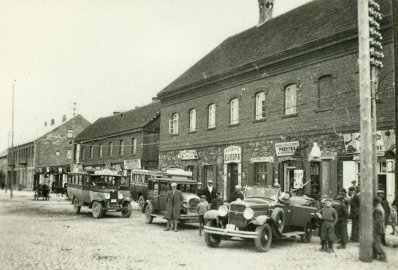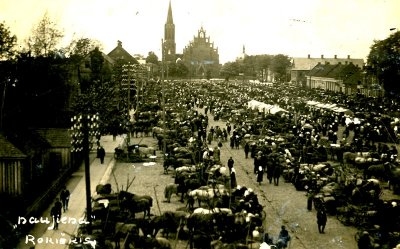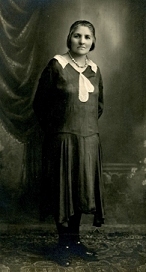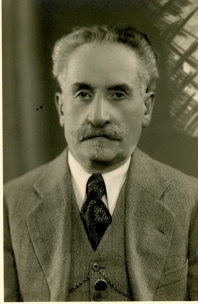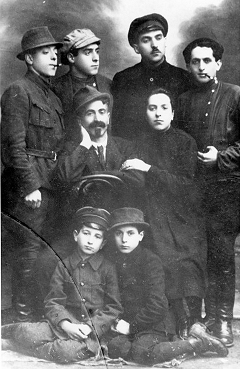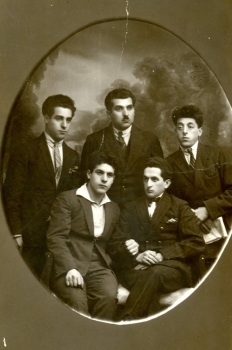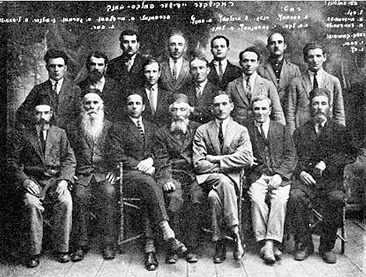 |
|
|
Rokiskis SIG member Ada Gamsu, of Johannesburg, South Africa, received
an email from her second cousin’s son, Zalman Jaloveckis, originally
from Vilnius but now living in Leipzig, Germany, telling her about an
article written in Lithuanian by
the Rokiškio Krašto Muziejus (Rokiskis Regional Museum).
This article is about Tonya Herman’s family from Rokiskis (Tonya is a
second cousin to both Ada and Samuil, Zalman’s father).
Through
Tonya’s daughter, Zehava in
Israel, Ada was able to get an English translation and with permission
of all involved, Ada gave it to the Rokiskis SIG to include on their
website.
|
From the Past of the Photography - the History of the German
Family
|
|
Dalia Kiukienė, Deputy Director
– Chief Funds Curator, |
|
In the beginning
of the 19th century photography was invented and the news about this
invention quickly spread all over the world and came to Lithuania as
well. Most part of the photographers in Lithuania were Jewish and this
is evidenced by the telephone numbers of Rokiškis telephone printed in
that time Lithuanian telephone subscribers’ book. The Jewish nationality
of the photographers could be noticed in the stamps on the photographs
stored at the Museum funds. These photos depict that there were quite
many great photographers, who used to take portraits, towns and
buildings in their photo studios using different decorations. The
photographers also traveled to the cities or villages to capture the
moments of various celebrations and occasions of Lithuanian people.
However, a lot of Museum photos don’t have author mark on them, so
a lot of the authors are unknown. |
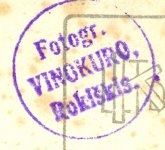 |
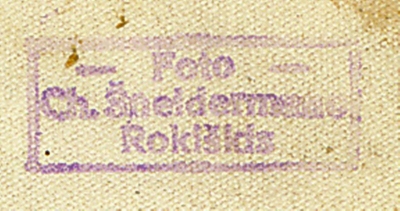 |
|
Photographers Stamps |
Photographers Stamps |
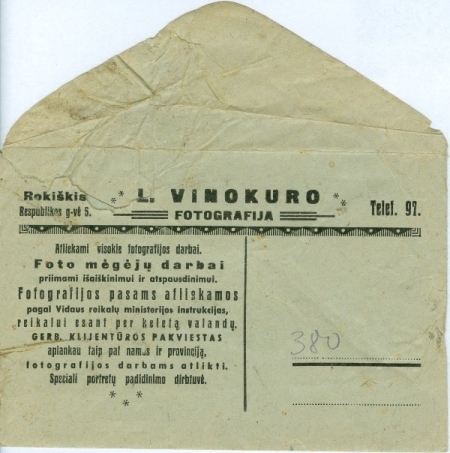 |
The envelope from the
studio of photographer L. Vinokuro |
|
|
The photo studio “Naujiena” (No. 18/5) and “Renesans” (No. 24) operated
in the Nepriklausomybės
Square. The firm “Naujiena” belonged to Izaokas Klingmanas. He sold
photo cameras and also taught people how to use them. This firm also
made prints of the city view photographs. There were more enterprises
located in the same building: the hotel “Europa”, food and grocery
shops. |
||||||||||||
|
|
||||||||||||
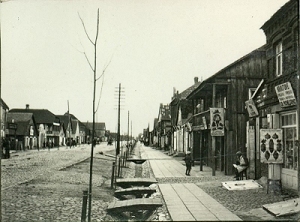 Kamajų / Respublikos street around 1931-1932 |
||||||||||||
The old Rokiškis photography has been
explored too little. The museum stores only limited and fragmented
archival material on interwar photographers, and the number of people
who can remember that period is notably decreasing. When the Second
World War began, some Jews departed, others were killed. The website of
the World Holocaust Remembrance Center (yvng.yadvashem.org) shows and
reminds us Rokiškis photographers - Vinokur (born 1886), Klingman,
Jehuda and Solomon Herman (Germans), Sara Finkel (born in 1906 in
Rokiškis, lived in Utena) and Reizl Shneiderman from Rokiškis. The fates
of Ch. Finkelis and Ch. Šneidermanas are unknown but on the website
mentioned Sara Finkel and Reizl Shneiderman most likely were the family
members of these photographers. |
||||||||||||
|
In 2014 Rokiškis Regional Museum published the catalog Rokiškis in
1914-1940 photographs. During six months the entire edition (400
pcs.) was sold and distributed. The preparation and photo research of
this publication gave the start for collecting information on the
photographers of Rokiškis county. After the publication of the mentioned
catalog, we collected the data on two Rokiškis
photographers - M. Germanas and J. Masiulis. There was no information
about German’s life, except that his name began from the letter “M”. |
||||||||||||
|
Museum collections are announced not only
through publishing, but also on the internet –the virtual exhibitions
have been prepared and the exhibits have been uploaded to the museum's
digital library (to LIMIS system). The photographs, which were uploaded
on the internet, attracted the interest of Lithuanian people, but also
caused great foreigners’ interest. Among the foreigners, who interested
in Museum photographs is the Dutch photographer Sara Mei Herman, the
granddaughter of Rokiškis photographer Mordechajus German (1901-1985).
Arriving to Rokiškis in 2015 she brought a collection of family
photographs, most of which was created at the German photo studio. |
||||||||||||
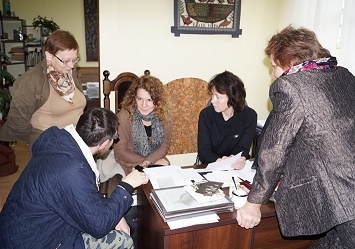
Dutch
photographer Sara Mei Herman (in the center) in Rokiškis regional museum
2015-11-04 |
||||||||||||
|
|
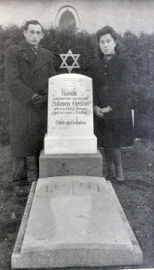 |
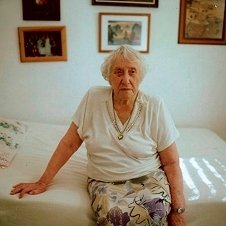 |
|
Saliamonas’ grave in Germany. Tonia and her husband Chanoch Levin are
standing next to the grave.
(from
Tonia Levin's
personal album. |
Saliamona‘s daughter Tonia. 2016. |
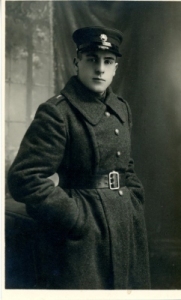 |
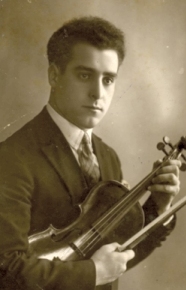 |
|
Mordechajus Germanas in Lithuanian army soldier uniform. Around 1922. (from Julijan Herman's album) |
Mordechajus Germanas. 1927. Rokiškis. (from Julijan Herman's album) |
|
|
|
The surviving
photographs disclose the images of Rokiškis gymnasium pupils, Rokiškis
postal employees, The Monument for Independence, portraits of people,
holidays and events. Apparently, not all photographs were stamped. The
museum has several identical photographs, some are stamped, the others
have no marks. |
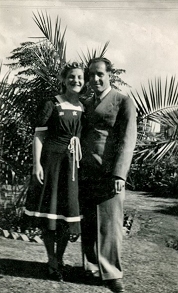 |
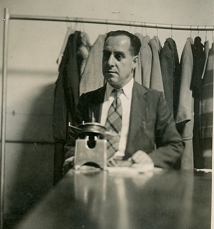 |
|
Mordechajus with his wife Bela. South Africa. (from Julijan Herman's personal album) |
Mordechajus in clothes cleaning workshop (Pietermaritzburg, South Africa). (from Julijan Herman's personal album) |
Due to that time difficult political and economic
situation Mordehajus went to South Africa around 1935, where his older brother
Isakas had been living. At that time it was believed that South Africa was a
good place to live and work. In order to avoid serving at military service
Mordehajus changed his date of birth in his documents from 1901 to 1904 with the
help of his brother living in Switzerland.
Mordehajus
and Isakas first of all settled in Durban, later in Pietermaritzburg. There
Mordehajus worked as a photographer like in Rokiškis times and later opened a
clothes cleaning workshop. In addition, he had another hobby - he liked playing
violin. This is evidenced by the surviving photographs. Around 1940 he married
Bela. In 1942 they had a daughter Estela, in 1944 the son Džuljanas (Julian) was
born and in 1945 the son Dovydas (David) came to this world. In 1974 Džuljanas
moved to Amsterdam. His daughter Sara Mei Herman continues family traditions
-she is a Dutch photo artist. In 2018 the Rokiškis Regional Museum plans to
arrange Sarah Mei Herman’ photo exhibition with dedication to the memory of the
German’s family.
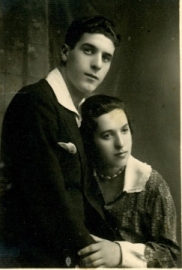 |
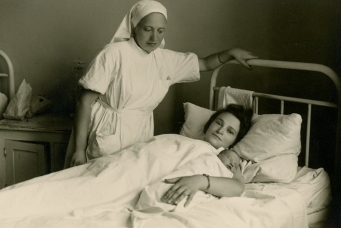 |
|
Judelis and Bela. 1926. Rokiškis.
(from
Julijan Herman's
album) |
Judelis‘ wife Šeina with a newborn girl. 1937.
Photographer J. Germanas, Kaunas.
(from
Julijan Herman's
album) |
 |
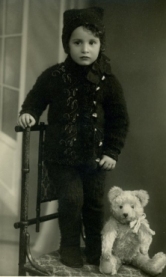 |
|
Judelis with his wife Šeina. 1934. Kaunas. (from Julijan Herman's personal album) |
Šeina‘s and Judelis‘ daughter Merelė. 1939. Kaunas. (from Julijan Herman's personal album) |
The younger son of German family Judelis (1907?-1944)
also worked as a photographer. Mordehajus was the teacher of photographic craft
for Judelis. It is known that they together drove along Rokiškis county, stayed
at inhabitants’ homes and took photos there. In 1920 both brothers worked in
Kamajai (Rokiškis district). Later Judelis together with his parents moved to
Kaunas and in 1934 there he opened his photo studio. It is known that he was
engaged in making photographs until the 8th October, 1940. This is evidenced by
the Kaunas city Tax inspection work file, created on the 27th
December, 1938 and completed on 8th October, 1940. The following
address of the company was written in the documents: Savanorių pr. 134, Kaunas.
The company operated from 1934, it had no employees and the owner worked there
alone. In 1939 the company had a cash income of 2460 Litas. The museum has some
photos with the stamps, where the other address was indicated - Ukmergės pl. 48,
Kaunas. In 1938 Ukmergė pl. (road) was named by Savanorių prospect.
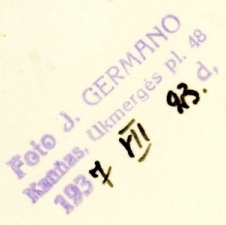 |
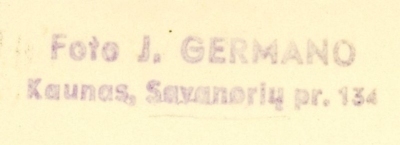 |
|
Judelis was married to Šeina (Schoenele) Levinaitė from Kupiškis. After
becoming an orphan, Šeina grew up in Rokiškis children's shelter. During
the Second World War Judelis family lived in of Kaunas ghetto. Eight
year old daughter Marele was murdered in Kaunas together with other
Jewish children. The wife got into the Štuthofas concentration camp. She
survived. Judelis became a victim of the genocide in 1944. |
|
It is likely
that the second son of the Germans family Isakas could be a
photographer. According to memories of relatives Isakas went to Durban
in South Africa in 1926-1927. After a couple of years, his wife Rasel
Levinaitė together with her daughters Zelda (Zelde, born in 1924 in
Lithuania) and Sonia (Sonje, born in 1926 in Lithuania) went to Isakas
place Durban. In 1931 in South Africa they got their third daughter
Phillis. Isakas worked as a watchmaker in Africa. Two photographs with
I. Germanas stamps (Ukmergės pl. 48) pose a question for us -if Isakas
was really a photographer? Maybe the letter "I" was only a printing
mistake? Maybe Isakas opened a photo studio in Kaunas earlier than his
brother Judelis? It could be supposed that later Judelis used his
brother’s stamp. Maybe it's only Judelis’ trick? In this photograph
there is captured Judelis’ wife and Judelis’ sister Bela imitating
Judelis himself – she is in man’s clothes.
|
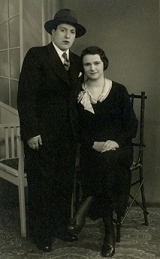 |
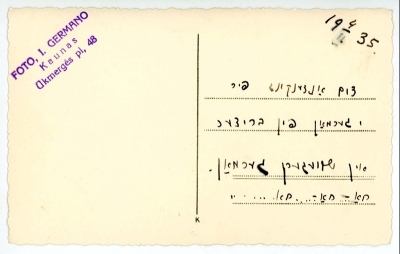 |
|
Judelis’ wife Šeina and Judelis’ sister Bela
imitating
Judelis himself – she is in man’s
clothes. 1935. Photographer I. Germanas, Kaunas. (from Julijan Herman's personal album) |
In the life of
these mentioned people there still remains a lot of ambiguity, silence,
uncertainty. I hope that the fate of one described family will be able
to disclose the life of the Jews better, and will contribute to the
study of the history of photography. |
